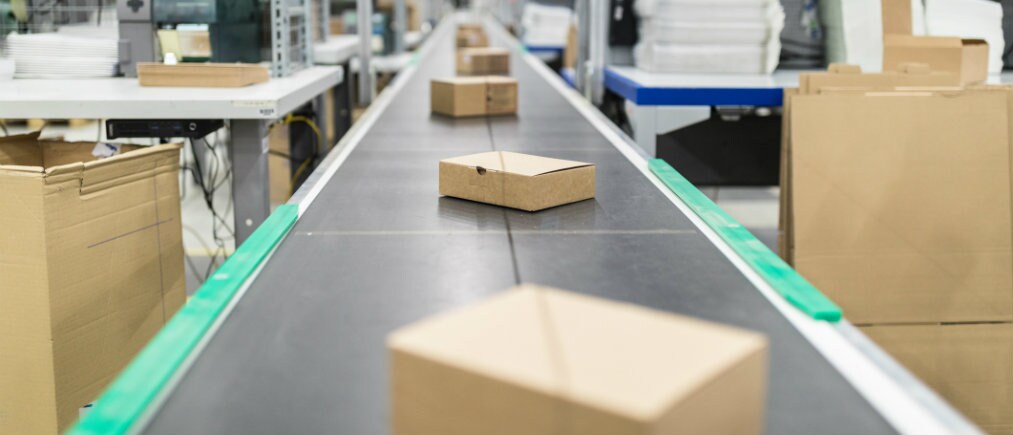From USPS to UPS, new postal rate hikes have led to higher shipping costs across the board. Learn how you can help keep shipping costs down.
 FEBRUARY 02, 2018
If your budget includes shipping costs, the recent US Postal rate increase probably didn’t come as welcome news.
The price of a USPS first-class postage stamp increased from 49 cents to 50 cents. Overall, rates increased by nearly 4 percent. FedEx and UPS also raised rates recently.
“This year’s increase in postage rates will have a significant impact on our bottom line,” says Katherine Harvey, co-founder of bone broth purveyor Bare Bones.
“Roughly 80 percent of Bare Bones’ business is online, direct-to-consumer,” Harvey continues. “Shipping costs already comprise about 40 percent of our total expenses in a year—a huge line item. Unfortunately, the rate increases are not limited to the USPS—they’re touching every parcel carrier and logistics partner we work with.”
For Lisa Chu, owner of Black n Bianco, rising shipping costs have been increasingly challenging over the last several years.
“It’s become more difficult to compete with Amazon—especially with the free two-day Prime shipping,” she says of her online children’s formal wear retail business. “Profit margins for e-commerce businesses like mine are becoming slimmer.”
“Doing this allows us to protect our margin by spreading the shipping costs across a greater number of products,” she says.
“Shipping three items to one customer is generally less expensive than shipping one item to three different customers,” adds Chu.
FEBRUARY 02, 2018
If your budget includes shipping costs, the recent US Postal rate increase probably didn’t come as welcome news.
The price of a USPS first-class postage stamp increased from 49 cents to 50 cents. Overall, rates increased by nearly 4 percent. FedEx and UPS also raised rates recently.
“This year’s increase in postage rates will have a significant impact on our bottom line,” says Katherine Harvey, co-founder of bone broth purveyor Bare Bones.
“Roughly 80 percent of Bare Bones’ business is online, direct-to-consumer,” Harvey continues. “Shipping costs already comprise about 40 percent of our total expenses in a year—a huge line item. Unfortunately, the rate increases are not limited to the USPS—they’re touching every parcel carrier and logistics partner we work with.”
For Lisa Chu, owner of Black n Bianco, rising shipping costs have been increasingly challenging over the last several years.
“It’s become more difficult to compete with Amazon—especially with the free two-day Prime shipping,” she says of her online children’s formal wear retail business. “Profit margins for e-commerce businesses like mine are becoming slimmer.”
“Doing this allows us to protect our margin by spreading the shipping costs across a greater number of products,” she says.
“Shipping three items to one customer is generally less expensive than shipping one item to three different customers,” adds Chu.
 FEBRUARY 02, 2018
If your budget includes shipping costs, the recent US Postal rate increase probably didn’t come as welcome news.
The price of a USPS first-class postage stamp increased from 49 cents to 50 cents. Overall, rates increased by nearly 4 percent. FedEx and UPS also raised rates recently.
“This year’s increase in postage rates will have a significant impact on our bottom line,” says Katherine Harvey, co-founder of bone broth purveyor Bare Bones.
“Roughly 80 percent of Bare Bones’ business is online, direct-to-consumer,” Harvey continues. “Shipping costs already comprise about 40 percent of our total expenses in a year—a huge line item. Unfortunately, the rate increases are not limited to the USPS—they’re touching every parcel carrier and logistics partner we work with.”
For Lisa Chu, owner of Black n Bianco, rising shipping costs have been increasingly challenging over the last several years.
“It’s become more difficult to compete with Amazon—especially with the free two-day Prime shipping,” she says of her online children’s formal wear retail business. “Profit margins for e-commerce businesses like mine are becoming slimmer.”
FEBRUARY 02, 2018
If your budget includes shipping costs, the recent US Postal rate increase probably didn’t come as welcome news.
The price of a USPS first-class postage stamp increased from 49 cents to 50 cents. Overall, rates increased by nearly 4 percent. FedEx and UPS also raised rates recently.
“This year’s increase in postage rates will have a significant impact on our bottom line,” says Katherine Harvey, co-founder of bone broth purveyor Bare Bones.
“Roughly 80 percent of Bare Bones’ business is online, direct-to-consumer,” Harvey continues. “Shipping costs already comprise about 40 percent of our total expenses in a year—a huge line item. Unfortunately, the rate increases are not limited to the USPS—they’re touching every parcel carrier and logistics partner we work with.”
For Lisa Chu, owner of Black n Bianco, rising shipping costs have been increasingly challenging over the last several years.
“It’s become more difficult to compete with Amazon—especially with the free two-day Prime shipping,” she says of her online children’s formal wear retail business. “Profit margins for e-commerce businesses like mine are becoming slimmer.”
Ideas for Managing Shipping Costs
Given the fact that shipping costs are increasing across carriers, business owners may want to have an overall strategy for managing this expense. Here are 10 ways to keep shipping costs under control.1. Offer free shipping and absorb the cost into your products.
“The best way to deal with increased postage cost is to offer free shipping and factor the shipping costs directly into the products,” says Chu. “Even if the shipping is not as fast as Amazon, online customers have become accustomed to free shipping. Absorbing the shipping cost isn’t a great business strategy, but if your business is in a competitive industry, you might have to do this in order to generate positive cash flow.”2. Set a minimum order for free shipping.
Increasing the minimum amount of product required to qualify for free shipping can increase profitability, according to Harvey.If it’s geographically feasible, it may cost less to have products delivered via a courier service.
